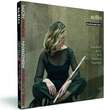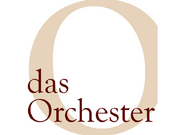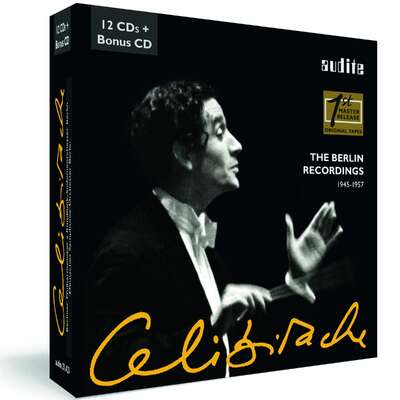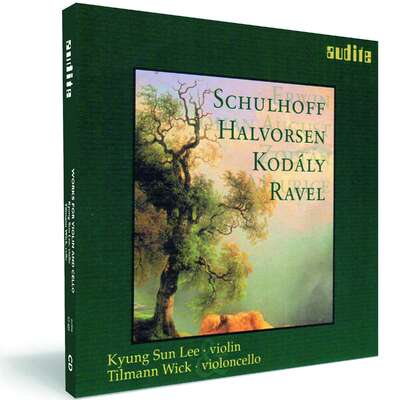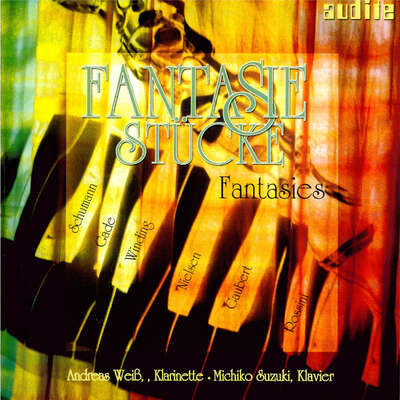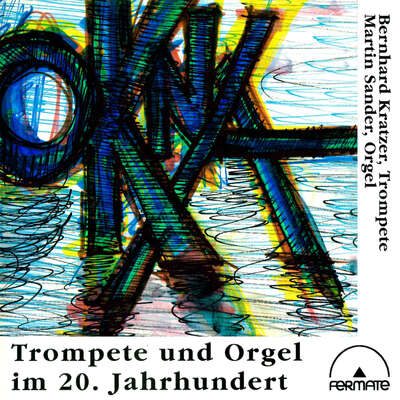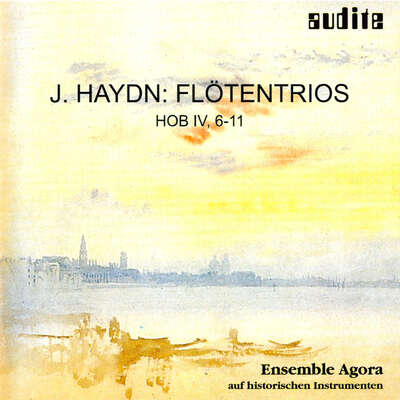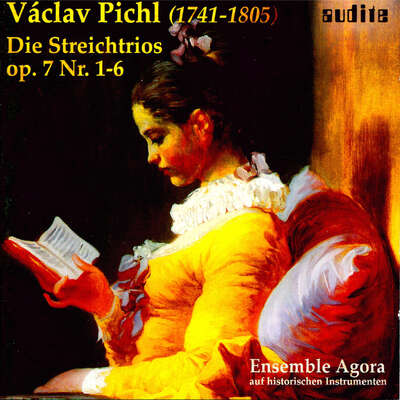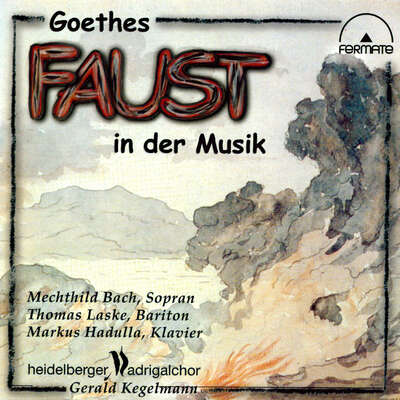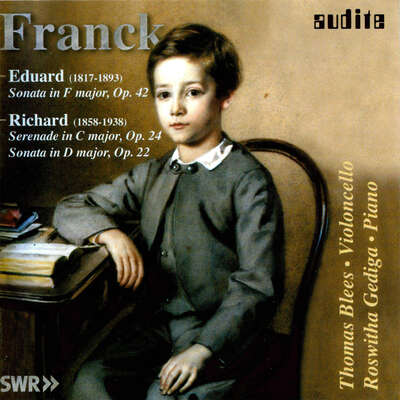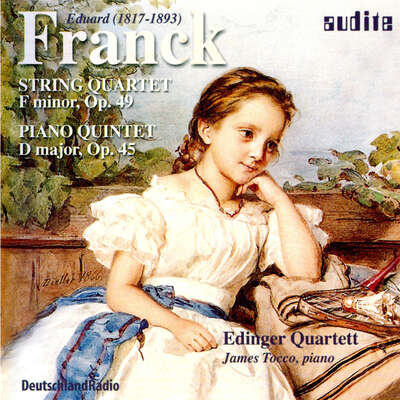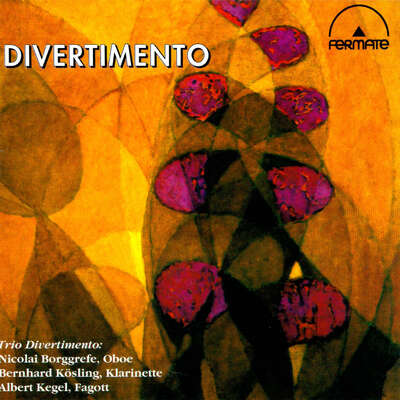
Five intensive and virtuoso works by five composers of the 20th century. In their respective aesthetics, each composer shares the ability to use forms and models of music history as inspiration for his own modern musical language. Existentially, they shared a common fate: all were persecuted by the National Socialists. Some were murdered in concentration camps and others fled to continue their lives in exile.more
"Anne-Catherine Heinzmann and Thomas Hoppe are performing the music of once brutally silenced composers with flexibility and a most delicate passion." (Pizzicato)
Details
|
Schulhoff - Smit - Gál - Raphael - Tansman
Works for Flute and Piano |
|
| article number: | 97.701 |
|---|---|
| EAN barcode: | 4022143977014 |
| price group: | BCA |
| release date: | 6. November 2015 |
| total time: | 65 min. |
Bonus Material
Informationen
With this CD, audite presents the second duo production with Anne-Cathérine Heinzmann (flute) and Thomas Hoppe (piano). It contains sonatinas and suites by five twentieth-century composers. In their respective aesthetics, each composer shares the ability to use forms and models of music history as inspiration for his own modern musical language. Existentially, they shared a common fate: all were persecuted by the National Socialists. Some were murdered in concentration camps and others fled to continue their lives in exile.
Leo Smit, Alexandre Tansman and Erwin Schulhoff were inspired by French music, including Claude Debussy's sense for the magic of sound and melodic elaboration and the openness towards jazz shown by the Parisian musical scene. For Günter Raphael, classical clarity and romantic differentiation were decisive ideals; in his late Intermezzi, Hans Gál looked back at his artistic origins in the circle surrounding Johannes Brahms. These five intensive, virtuoso works shed light on facets of an age to which attention is otherwise but rarely paid.
Reviews
www.musicweb-international.com | Friday April 1st | Jonathan Woolf | April 1, 2016
This appositely programmed flute recital focuses on a quintet of composers whose lives were disrupted, and in two cases ended, by the onset ofMehr lesen
Erwin Schulhoff’s bright and breezy Flute Sonata dates from March 1927 and was premiered in Paris the following month by René Le Roy with the composer accompanying. It is in most senses a very Francophile work – aerial, light-hearted, with a crisply supportive role for the piano. There’s something Poulenc-like about the bittersweet Aria and much savoir faire in the handling of the witty Rondo finale. The Dutch-born Leo Smit also spoke a decidedly French vernacular in much of his music. The Flute Sonata proved to be his last completed work, finished a couple of months before he was shipped East and murdered in Sobibór. It very much defies the circumstances in which it was written. Its airy nonchalance and brash, rhythmically sprung finale – élan to spare – frame the slightly impressionist slow movement that was the last to be written.
Hans Gál’s music has won increasing admiration over the last decade or so. The Three Intermezzi are late works, composed in 1974 and form a contrasted trio. The first is a romantic reverie with hints of familiar Gal concerns in Schubert and Brahms. There’s a Ländler to occupy the central Intermezzo and a cleverly worked-out finale. Raphael’s Flute Sonata was written in 1925 and its opening shows the youthful composer’s command of Elysian long-breathed Francophile lyricism. This extrovert, high-spirited and auspicious work marked the 22-year old’s promising development. Thematic material is cleverly parceled-out and he draws out the flute’s Arcadian and avian qualities alike very adeptly indeed. Finally, there is Alexandre Tansman’s Sonatine written in the same year as Raphael’s own flute piece. Tansman goes in for terpsichorean vernacular via the Foxtrot and Ragtime, scrunching down via a mordant Notturno, and leaving the stage with a carefree finale.
Well recorded, Anne-Cathérine Heinzmann and Thomas Hoppe prove assiduous and sensitive guides to this repertoire.
Record Geijutsu | APR. 2016 | April 1, 2016
Japanische Rezension siehe PDF!Mehr lesen
Das Orchester
| 03/2016 | Christina Humenberger | March 1, 2016 | source: http://www.dasor...
Werke für Flöte und Klavier
Werke von Erwin Schulhoff, Leo Smit, Hans Gál und anderen
[...] bei der vorliegenden Aufnahme bedarf es keiner Tagesform, um immer wieder zu erkennen, dass die Interpretationen in sich rund und schlüssig sind, das Zusammenspiel von Anne-Cathérine Heinzmann [...] und Thomas Hoppe [...] symbiotischer kaum sein könnte und einfach alles „richtig“ ist. Mehr lesen
concerti - Das Konzert- und Opernmagazin | Januar 2016 | EW | January 1, 2016 Doppelpass
Ihr wandlungsfähiges Spiel ist konzentriert und doch entspannt, die vielfältigen Charaktere und Idiome werden mit feinem Stilempfinden herausgearbeitet: Elegantes, Jazziges, Klassizistisches, Experimentelles, Anleihen an Modetänze, Idyllen, moderne Lyrismen. Was für eine Repertoirebereicherung!Mehr lesen
www.pizzicato.lu | 25/11/2015 | Guy Engels | November 25, 2015 Das Schweigen gebrochen
Lebensbedrohliche Momente, Todesängste scheinen besondere schöpferische Kräfte freizulegen. Ist es Protest gegen ein Unrechtsregime? Ist esMehr lesen
Erwin Schulhoff, Leo Smit, Hans Gal, Günter Raphael, Alexandre Tansman gehören zu jenen Verfemten, die zum Schweigen gebracht wurden.
Anne-Catherine Heinzmann und Thomas Hoppe haben ihnen nun wieder eine Stimme verliehen. Es ist die Stimme aufgewühlter Poesie und romantischen Nachklangs. Anne-Catherine Heinzmann vermittelt uns mit einem sehr geschmeidigen, nie prassenden, nie opulenten Ton von butterweicher dynamischer Ausprägung die Zeitlosigkeit dieser Musik, ihre zarte und intensive Leidenschaft.
Anne-Catherine Heinzmann and Thomas Hoppe are performing the music of once brutally silenced composers with flexibility and a most delicate passion.
Musik & Theater | 01/02 Januar/Februar 2016 | Werner Pfister Flötenzauber – zweiter Teil
Anne-Catherine Heinzmann ist mit dieser Musik bestens vertraut, nimmt sich jedem der fünf Werke mit imponierender Souveränität und einem stets weich klingenden, gleichzeitig aber kernigen und äußerst tragfähigen Flötenton an. Mal witzig verspielt, mal melodisch charmant, oft hochvirtuos und mit viel Freude an musikalischen Extravaganzen. Ebenso zu rühmen ist die Aufnahmetechnik: Selten wird das Zusammenspiel von Silberflöte und Klavier (souverän: Thomas Hoppe) derart natürlich, klangschön und ausgewogen abgebildet.Mehr lesen
